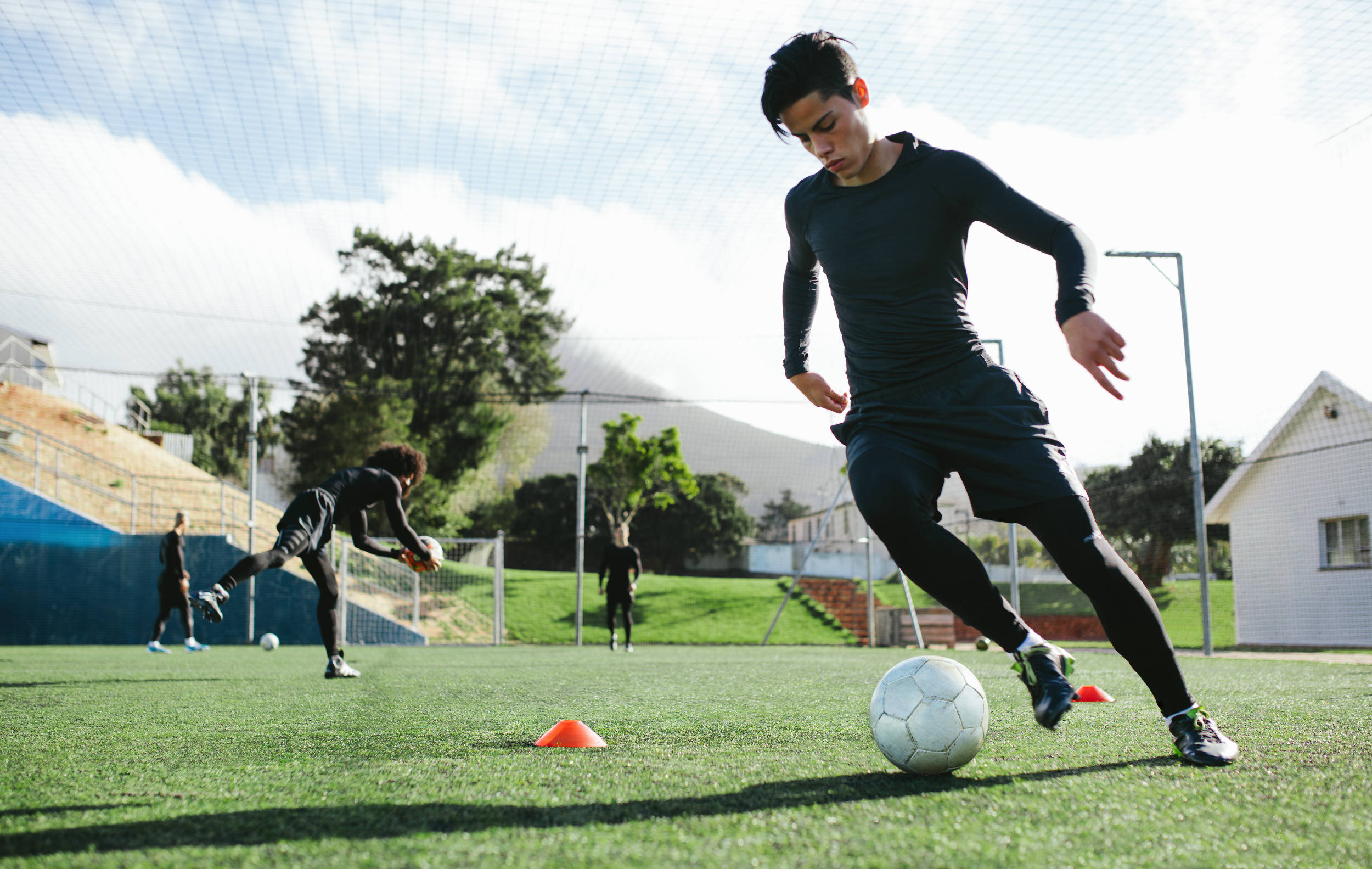Return to play testing after ACL reconstruction: Is 1 year too soon?
There are various factors that determine when an athlete can return to playing competitive sport after having an ACL reconstruction. It is crucial to make sure that the ACL graft has healed adequately and that the athletes muscle strength and control has returned to near-normal levels before returning to sport.
Why can’t I play sport before 1 year?
Surgeons use guidelines based on healing at a cell-based level to determine the minimum time required before an athlete can return to sport. After an ACL reconstruction, the body breaks down the cells inside the new graft tissue and then rebuilds it from the ground up. This process is referred to as ligamentization.
This process can take years to complete but large proportion of the remodelling occurs within 12 months[1]. Returning to play prior to maturation of the graft would expose the grafts to high loads while it is still weak. As such, there is a significant risk of tearing the ACL graft.
What is return to play testing?
The graft re-rupture rate is still higher than baseline from one year to two years after the ACL reconstruction. As a result, it is imperative that an athlete is physically prepared to return to play. This involves looking for adequate muscle bulk and strength, balance and coordination. This forms the foundation of return to play (RTP) testing and is performed by an appropriately trained physiotherapist.
Some of the things assessed during RTP testing include:
- ACL RSI Scale
- Single leg hop for distance
- Single triple leg hop for distance
- Single triples crossover hop for distance
- Box drop vertical jump
- Modified agility T-test
- 4 repetition maximum on the 45-degree incline leg press
If the RTP test has successfully been passed, the athlete can commence a graduated return to competitive sport. It is importance to discuss ACL injury prevention exercises at this stage which need to be performed before each match to be effective [2] [3] [4].
What if I fail the return to play test?
If the athlete fails the RTP test, they should be educated not to return to sport. They should be counselled on what areas they will need to work on. The importance of supervised rehabilitation should be stressed. The test should be repeated at an appropriate interval when the athlete has improved on their deficiencies.
Unfortunately, many people fail RTP test on the first attempt. The reasons for this include a lack of supervised rehabilitation, patients not completing or following a rehabilitation program or a lack of insight from the patient about their physical status.
Does return to play testing work?
The evidence does show that the graft re-rupture rate lower with patients that pass RTP tests[5]. This is why I recommend all patients undertake one at the end of their rehabilitation program. An ACL reconstruction is a long-term investment. The operation is the ‘easy’ part and the onus is on the patient to complete the appropriate post-operative rehabilitation.
Summary
It is important to get a return to play test to assess the physical condition of an athlete following an ACL reconstruction. The re-rupture rate of the ACL graft is lower if they pass the test. The take home message is that an athlete returns to play when they are physically ready – this may be at 12 months or 18 months depending on their condition.
References:
1. Pauzenberger L, Syré S, Schurz M. “Ligamentization” in hamstring tendon grafts after anterior cruciate ligament reconstruction: a systematic review of the literature and a glimpse into the future. Arthrosc J Arthrosc Relat Surg Off Publ Arthrosc Assoc N Am Int Arthrosc Assoc. 2013;29(10):1712-1721. doi:10/f2mr5t ↩
2. Sadoghi P, von Keudell A, Vavken P. Effectiveness of anterior cruciate ligament injury prevention training programs. J Bone Joint Surg Am. 2012;94(9):769-776. doi:10.2106/JBJS.K.00467 ↩
3. Myer GD, Ford KR, Hewett TE. Rationale and Clinical Techniques for Anterior Cruciate Ligament Injury Prevention Among Female Athletes. J Athl Train. 2004;39(4):352-364. ↩ 4. Silvers-Granelli HJ, Bizzini M, Arundale A, Mandelbaum BR, Snyder-Mackler L. Does the FIFA 11+ Injury Prevention Program Reduce the Incidence of ACL Injury in Male Soccer Players? Clin Orthop. 2017;475(10):2447-2455. doi:10.1007/s11999-017-5342-5 ↩ 5. Kyritsis P, Bahr R, Landreau P, Miladi R, Witvrouw E. Likelihood of ACL graft rupture: not meeting six clinical discharge criteria before return to sport is associated with a four times greater risk of rupture. Br J Sports Med. 2016;50(15):946-951. doi:10.1136/bjsports-2015-095908 ↩Pauzenberger L, Syré S, Schurz M. “Ligamentization” in hamstring tendon grafts after anterior cruciate ligament reconstruction: a systematic review of the literature and a glimpse into the future. Arthrosc J Arthrosc Relat Surg Off Publ Arthrosc Assoc N Am Int Arthrosc Assoc. 2013;29(10):1712-1721. doi:10/f2mr5t ↩
-
Sadoghi P, von Keudell A, Vavken P. Effectiveness of anterior cruciate ligament injury prevention training programs. J Bone Joint Surg Am. 2012;94(9):769-776. doi:10.2106/JBJS.K.00467 ↩
-
Myer GD, Ford KR, Hewett TE. Rationale and Clinical Techniques for Anterior Cruciate Ligament Injury Prevention Among Female Athletes. J Athl Train. 2004;39(4):352-364. ↩
-
Silvers-Granelli HJ, Bizzini M, Arundale A, Mandelbaum BR, Snyder-Mackler L. Does the FIFA 11+ Injury Prevention Program Reduce the Incidence of ACL Injury in Male Soccer Players? Clin Orthop. 2017;475(10):2447-2455. doi:10.1007/s11999-017-5342-5 ↩
-
Kyritsis P, Bahr R, Landreau P, Miladi R, Witvrouw E. Likelihood of ACL graft rupture: not meeting six clinical discharge criteria before return to sport is associated with a four times greater risk of rupture. Br J Sports Med. 2016;50(15):946-951. doi:10.1136/bjsports-2015-095908 ↩

